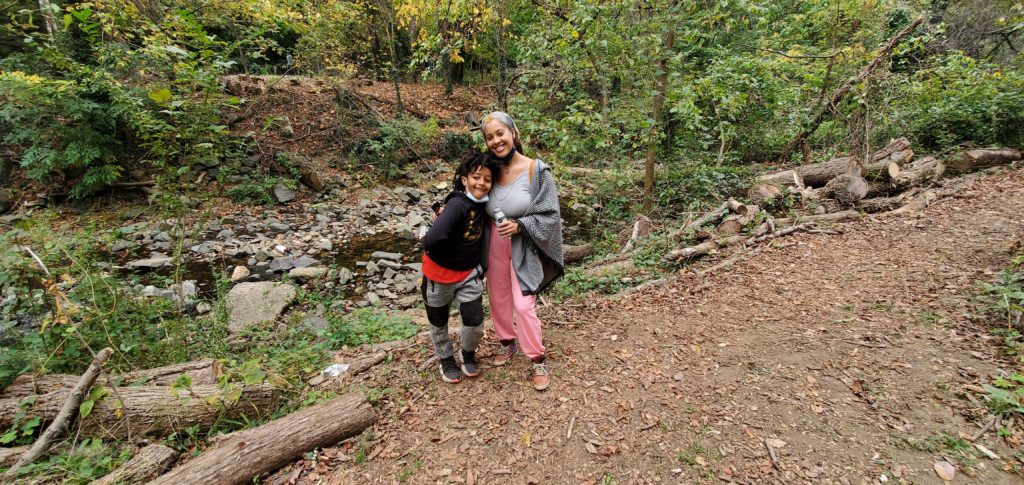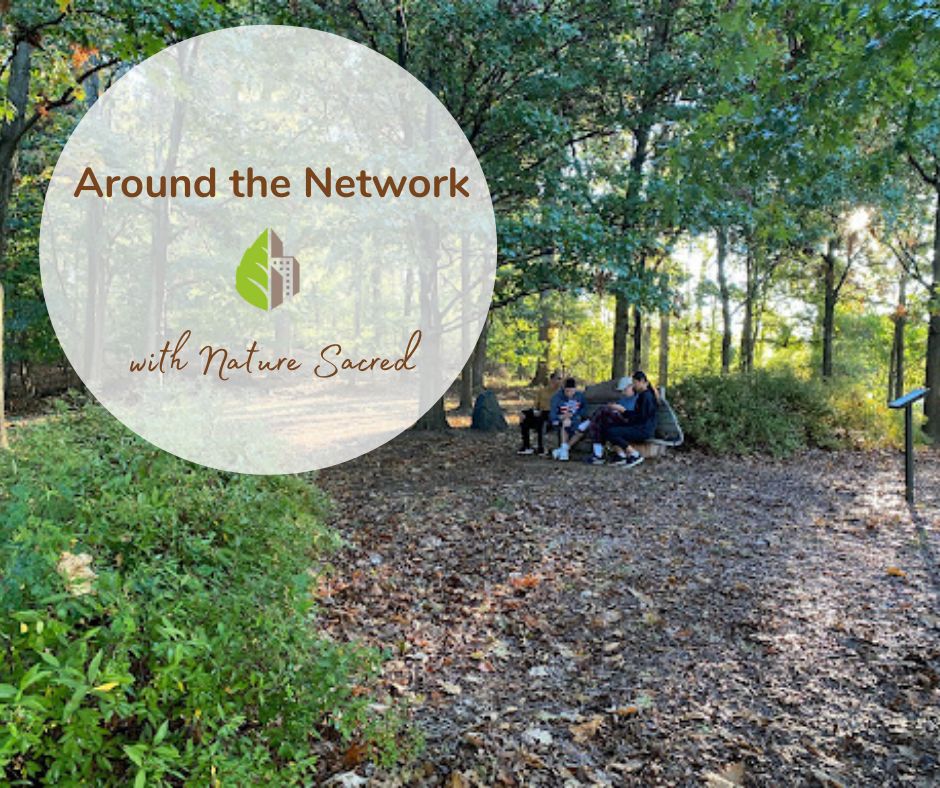It has been quite a busy October for the Nature Sacred Network! The crisp autumn air and crunch of leaves set the scene for a wonderfully festive month of celebrations that saw guests and community members from all over the D.C and Baltimore areas come join the festivities! Most importantly, quality time was spent together, in nature.
Georgetown Waterfront Park
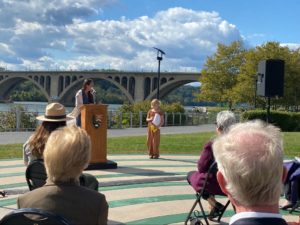
The month’s events kicked off on Sunday the 17th at the Georgetown Waterfront Park, in Washington, DC, where The Friends of Georgetown Waterfront Park and the National Park Service along with the Washington community gathered together to celebrate the 10th anniversary of its opening. A staple in the community, this park and Sacred Place, one of many Sacred Places featuring a labyrinth, has been a space of respite and healing since its completion in 2011. According to Friends of Georgetown Waterfront Park Co-Founder, Ann Satterthwaite, “this now beautiful place was once a parking lot; a place that many considered to be unsanitary”. It took 15 years of tireless
work, but eventually, Ann and The Friends of Georgetown Waterfront Park, raised enough to begin the first phase of transformation, and their work, with the help of Nature Sacred has since transformed into what the park is today.
To close out the celebration, Ada, the daughter of a Friends Board Member shared a poem to honor those who made this park possible for all to enjoy. It reads:
The green grass grows
The tall strong trees
The birds that sing happily
These we all have because of you.
Joseph Beuys Sculpture Park
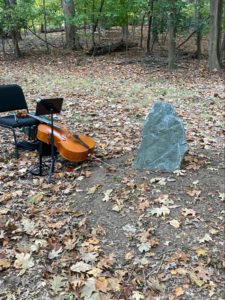
Next on the celebration docket, highlights from the Joseph Beuys Sculpture Park 20th anniversary at the University of Maryland Baltimore County in Catonsville, MD. On October 23rd, students, faculty, the public and Nature Sacred Firesouls, Design Advisors and staff gathered, and “musical instruments were strategically placed around the park like art,”as Nature Sacred CEO Alden Stoner described. The celebration marked the 20 year anniversary of the Joseph Beuys Sculpture Park, an homage to German artist and revolutionary, Joseph Beuys. Beuys organized a symbolic performance by placing a stone next to each tree, marking time’s passage; he saw this as a metaphor for human activities. He called the project social sculpture, a collaborative process between artists and citizens to create environmental art beneficial to communities. In the spring of 2001, 30 oak trees and granite stones were planted as pairs at UMBC.
As the trees have grown and continue to grow, the stones diminish and the landscape changes. At UMBC, the site encourages all who pass it to engage with their communities, let their ideas take root, and put their stones into motion. Twenty years later, we continue to celebrate Beuys’ legacy.
The event kicked off with words from second generation Firesoul and Curator of Collections at UMBC, Sandra Abbott. After opening with land acknowledgements, Sandra shared that “we strive to create a culture at the Joseph Beuys Sculpture park that prioritizes community, dignity, mindfulness and personal wellness.” And what a community and wellness-focused event it was!
Sandra recalls a particularly special moment: “The most memorable moment of the weekend’s events for me was during the performance when I laid down on the Nature Sacred bench, listening to the sounds of the orchestra surrounding me in the Park. It was so novel — to watch the autumn leaves of the (now 20-year old) oak trees gently drifting toward me on their way down. It was as if they were dancing to the composition played by the musicians all around me in the park. For a few moments, I forgot about the audience assembled, the snack table I needed to attend to, and the emails I had to send.
It was such a gift to enjoy this special moment among the lush and fragrant falling leaves and acorns. I took a brief video and shared it online. It was then that I vowed not to wait another 10 years to bring live music into Joseph Beuys Sculpture Park.”
Despite the brief rain shower, a wonderful day of fresh air, falling leaves, beautiful music, and togetherness was had by all, in nature.
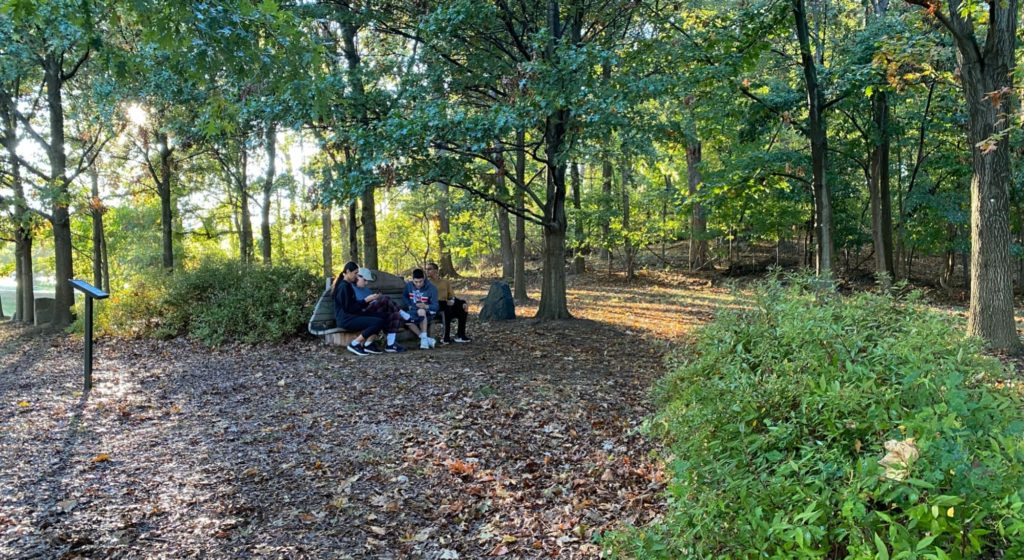
Wangari Gardens
While the Joseph Beuys Sculpture Park celebrated, Wangari Gardens in Washington, DC, a 2.7 square mile park and future home of a Sacred Place held their Community Build Day and Fall Festival. Sacred Place Project Manager Neha Srinivasan attended, and recounts the high energy and community bonding that set the mood for the day. Heidi, Cherisse, and Zoe, the landscape architects from EnviroCollab who are designing the garden, coordinated the build, where volunteers of all ages focused on constructing a ‘Circle of Peace’, a bioactive artistic installation of ninebark, hydrangea, inkberry, grasses and other perennials, arranged to enhance the beauty of the park space. Neha recalls, “when I arrived, they had already dug the beds, preparing to plant.
By afternoon, the area was transformed from a blank canvas into a flourishing garden, in just the span of a few hours.”
It’s truly inspiring to see what many hands can create, when working in harmony. Following the planting session, bagels and coffee were served on compostable dishware while a short ceremony was held, and a bench erected, in remembrance of a beloved community member.
By 1pm, it was time for the rest of the festivities to begin. Children and families enjoyed the games, crafts, music, and digging in the dirt. A truly magical vision of community bonding and nature restoration.
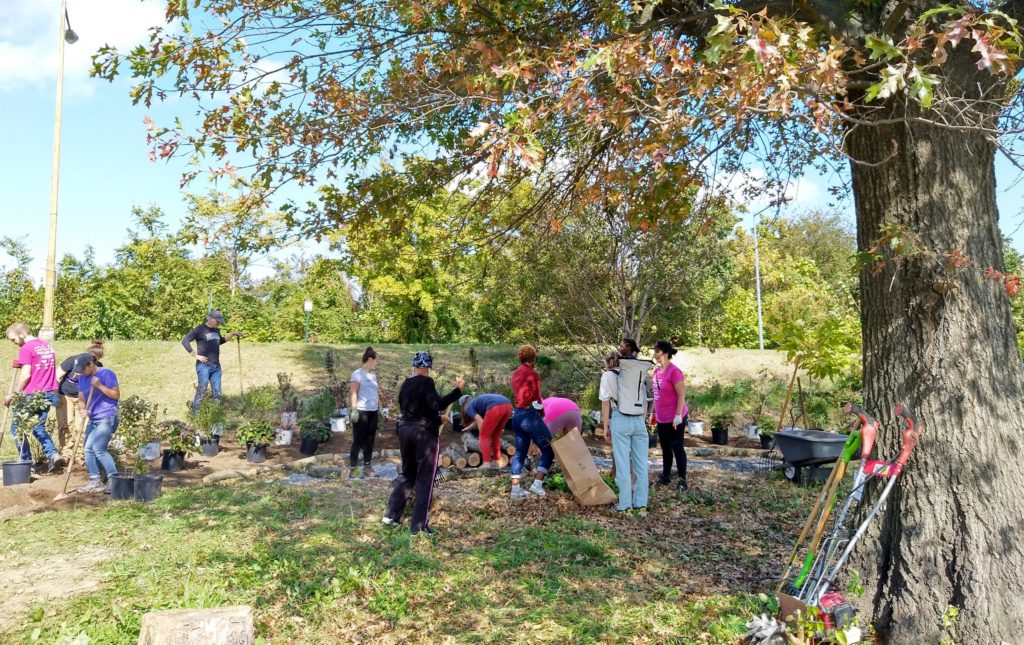
Stillmeadow Peace Park
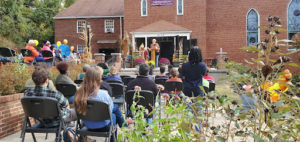
To wrap up the eventful weekend, a motley crew of community volunteers, the forest service, elected city officials, state administrators and members of the Stillmeadow faith community gathered to celebrate the one-year anniversary of Stillmeadow Peace Park. The event kicked off at 10 a.m. and was to last until 3 p.m.; when 3 p.m. arrived, community members were still milling around the park, exploring.
This urban forest is being thoughtfully restored and transformed into Stillmeadow Peace Park — in a project led by Pastor Michael Martin of Stillmeadow Community Fellowship in Northwest Baltimore. Some are beginning to call Pastor Michael the “green pastor” and his church, the “green church”. Speaking to those gathered, Pastor Michael said:
“This site is proof that when you cut through the bureaucratic tape and bring people together – the magic happens.”
The Stillmeadow Peace Park is a 10 acre area of land, owned by the church. The space has been cleared of 60 or so ash trees that fell victim to emerald ash borers that made the forest unsafe for anyone who would enter it. Hidden within the forest is a stream, a pond and mediation areas – future Sacred Places – accessible via rugged paths will soon be made more accessible, as the project progresses. This particular Saturday was about coming together — and working together, for a common, shared goal: Continuing evolution of this urban forest that is gaining national attention as a model for environmental justice.
The rain held off as Pastor Michael led tours of the space and volunteers ventured into the forest to plant trees, a continued effort to repopulate the area with heartier varieties. Some trees were also donated to community members to take home and plant in their own yards, helping to bring nature into each and every household.
